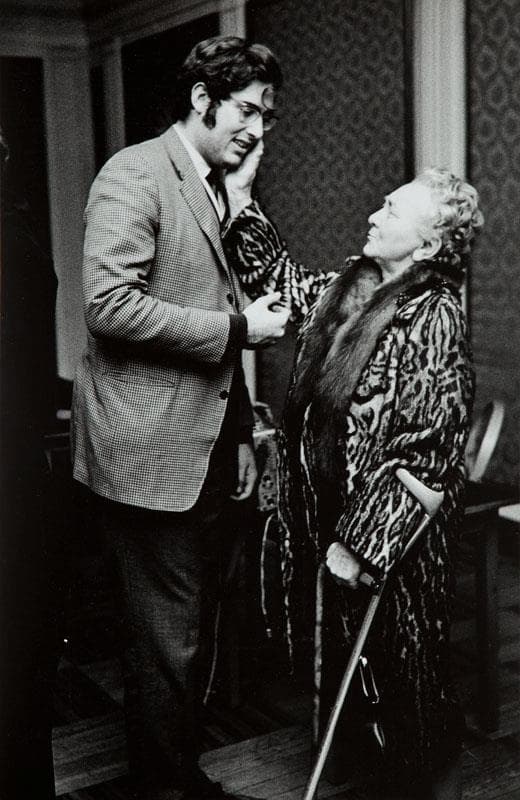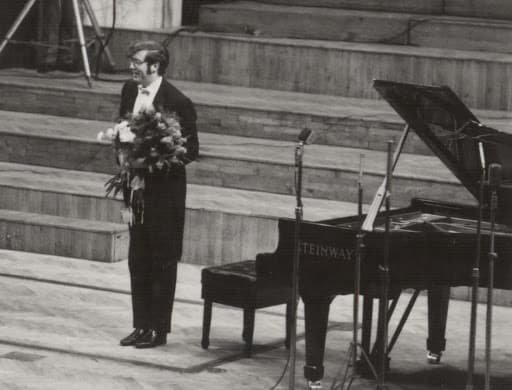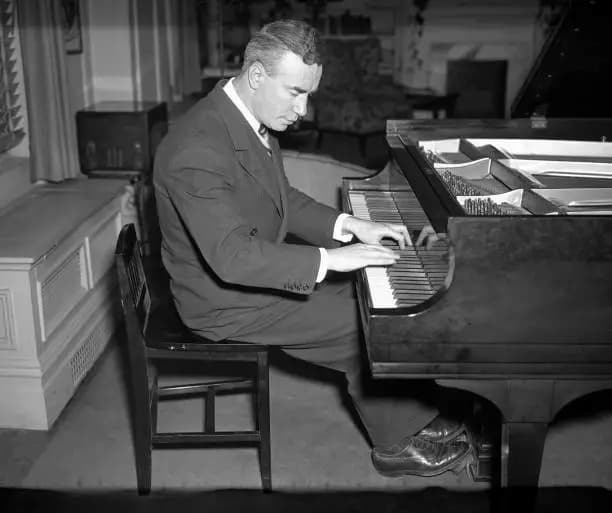Pianist Garrick Ohlsson, born on 3 April 1948 in Bronxville, New York, is still the only competitor born in the United States to win the gold medal award at the International Chopin Piano Competition in Warsaw in 1970. He had previously won the Busoni Competition in Bolzano, Italy (1966) and the Montreal Piano Competition in Canada (1968). Ohlsson has been described as “a musician with a modest manner and exceptional intelligence, and with a complete technique capable of projecting subtle forms.”
Garrick Ohlsson Plays Chopin’s Ballade in G minor, Op. 23
Musical Aptitude

Garrick Ohlsson
Growing up in White Plains, New York, Garrick Ohlsson was the only child of Alvar Ohlsson, a Swedish émigré who came to the United States after World War II, and Paulyne Rosta, a Sicilian-American mother. Garrick remembers picking out tunes on the piano at the age of three, but he only started formal piano lessons at the Westchester Conservatory of Music with Tom Lishman at age eight.
Ohlsson’s progress was astounding, and at the age of 11 he prepared a complete recital program including the Third English Suite by Bach, the K. 333 Sonata by Mozart, the Op. 22 Sonata by Beethoven, a Chopin Nocturne, and the Liszt-Hungarian Rhapsody No. 11. When he played that particular program to Lishman’s teacher Frieda Van Dieren in London, she could only mutter in astonishment, “this is the real thing, the kid really has it.”
Alexander Scriabin: Piano Sonata No. 2 in G-Sharp Minor, Op. 19, “Sonata-Fantasy” (Garrick Ohlsson, piano)
Juilliard and Gorodnitzki

Garrick Ohlsson and Monique Haas
Once Garrick had turned 13, it was becoming abundantly clear that he had special talents, and his parents started to look for an advanced teacher. Ohlsson remembers, “I don’t know how it got arranged, but my father got hold of the name of Sascha Gorodnitzki.” Gorodnitzki had come to the United States at an early age and studied with Josef Lhevinne and Rubin Goldmark. He became a faculty member at the Juilliard School in 1948 and remained there until his death.
Ohlsson auditioned for Gorodnitzki, and he was informed that he should come to Juilliard in the fall and study with him in the preparatory division. According to Ohlsson, “this was a great compliment, because Gorodnitzki only taught at the upper level, the university level, as it was called.” He remembers that Gorodnitzki was a perfectionist and a great pianist and that he demonstrated selected passages really well. Soon Ohlsson was playing the Rachmaninoff Third Piano Concerto, the Liszt Sonata, the Beethoven Op. 109, and the Prokofiev Eighth Sonata; all this at age 15.
Ohlsson Plays Liszt’s Funérailles
The Gilels Moment

Garrick Ohlsson, winner at the Chopin Competition
At the age of 15, Ohlsson also went to Carnegie Hall to hear Emil Gilels. He sat incredibly close to the piano, maybe only five feet away from the instrument. “I had never been that close to such a great pianist in performance before,” he remembers, “and to experience the full range of projection at such close quarters was an awesome, awesome conscious experience. I remember being inundated with sensation.”
To Ohlsson it was an almost primal sensation, “like how much bigger the fortissimo was than my own; how much softer and much more controlled and delicate and multi-coloured the pianissimo was. How things spoke, what time things took, his intense concentration. And I was really very, very humbled.” It was an epiphany, and “I actually knew what was involved, and I could feel the difference between him and me. It was time to grow up now, and I knew what I had to do.”
Stefan Wolpe: Passacaglia (Garrick Ohlsson, piano)
Competitions and Obsessions

Sascha Gorodnitzki
Competitions came early in Ohlsson’s career as he won his first local contest at fifteen, and another at seventeen. Just before he entered Juilliard as a full-time student, he won his first international competition at the Busoni in Italy. He did continue his musical development by taking lessons with Rosina Lhévinne, Claudio Arrau, Olga Barabini, and Irma Wolpe, and he remembers that “in my student days when I gave a few performances each year, each one was a life and death event. It was a real struggle. I threw all my musical and emotional eggs into one basket, and sometimes it went well, sometimes it did not.”
Ohlsson continues to be obsessed with 3 composers, Chopin, Liszt, and Schubert. He loves Chopin for his incredible and unparalleled pianistic intuition, his lucidity, and the way he copes with the most sophisticated, demonic, sensuous, and mad feelings. Ohlsson is enamoured with the “grandeur of Liszt, the theatre, the great drama, and even the religion in him. His music is not piano music per se, as the piano becomes opera, orchestra, and declamation of speech.” Ohlsson has never felt entirely comfortable playing Schubert in public, as he considers his music too intimate for large concert halls.
For more of the best in classical music, sign up for our E-Newsletter
